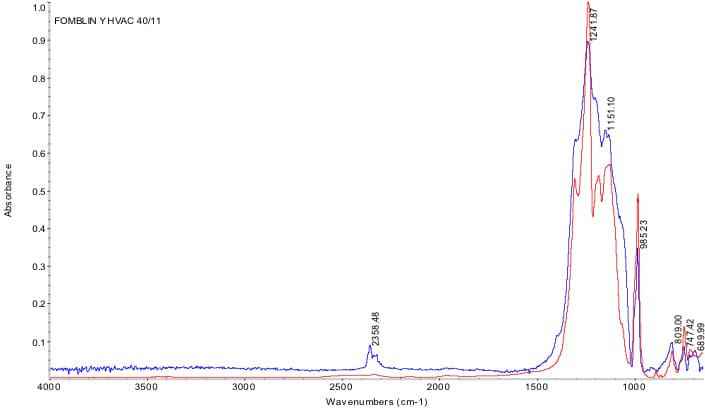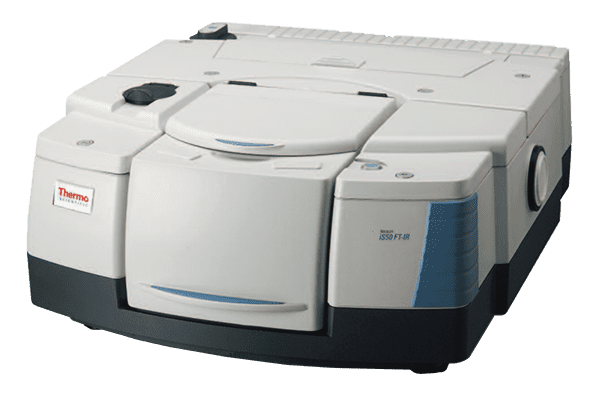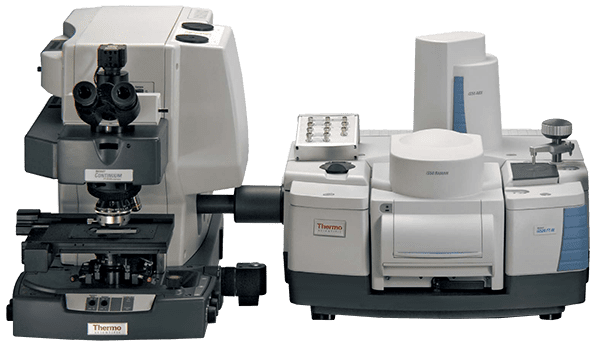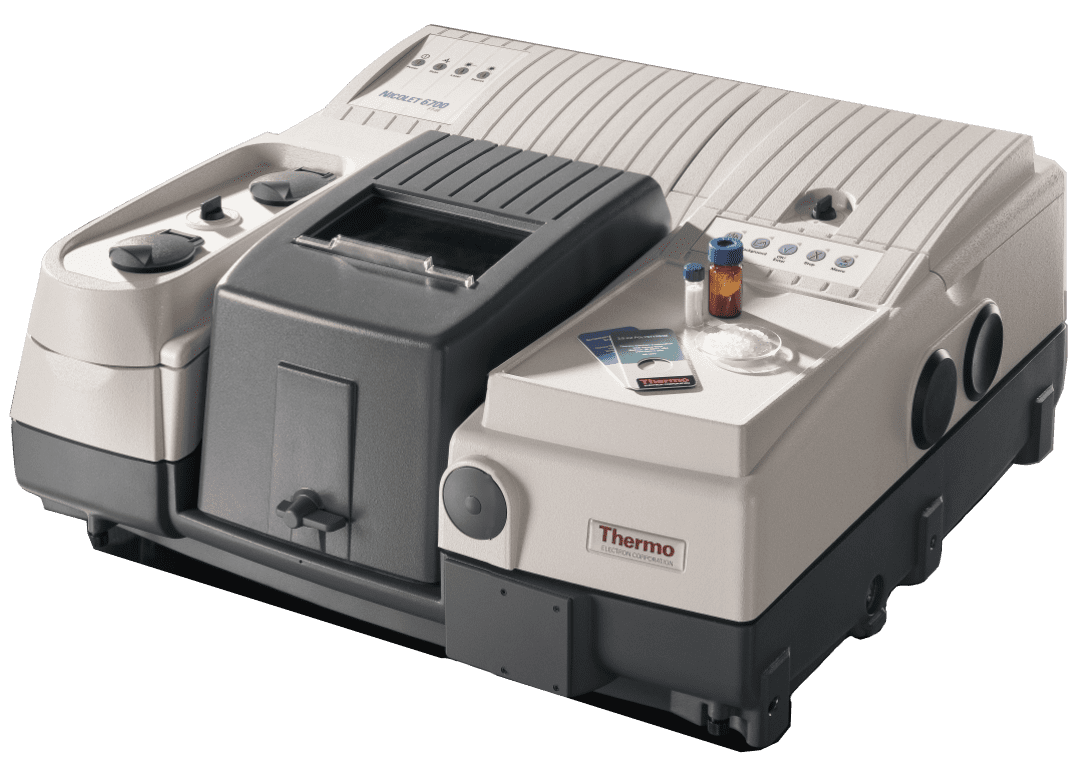In an FTIR measurement, an initially wide range of infrared wavelengths are simultaneously shone upon an area of the sample.
Using an interferometer, the FTIR system then extracts a specific wavelength band at a time and measures its light intensity: selectively detecting either reflected or transmitted beams. The operator will determine whether to target transmittance or reflectance intensity based on the sample’s composition and topography. After this initial measurement, the extracted wavelength band is subsequently scanned over the entirety of the wavelength range, capturing an intensity measurement at each band. The resulting values are then fourier-transformed to produce the initial sample spectrum.
To isolate the real sample spectrum, a reference – or ‘blank’ – trial is conducted without any material inserted in the beam path. This spectrum is used to normalize the sample spectrum and to isolate the relevant specimen information from the total signal.
In the wavelength range of interest, different types of chemical bonds absorb at different wavelengths: providing a spectral signature which is material dependent. The resulting background-subtracted spectrum can then be used to qualitatively identify chemical functional groups and trace chemicals present in the specimen.
ATR-FTIR is a variant FTIR measurement mode which uses a specialized crystal to generate multiple internal reflections along the lateral dimension of the sample, increasing signal-to-noise and surface sensitivity.





